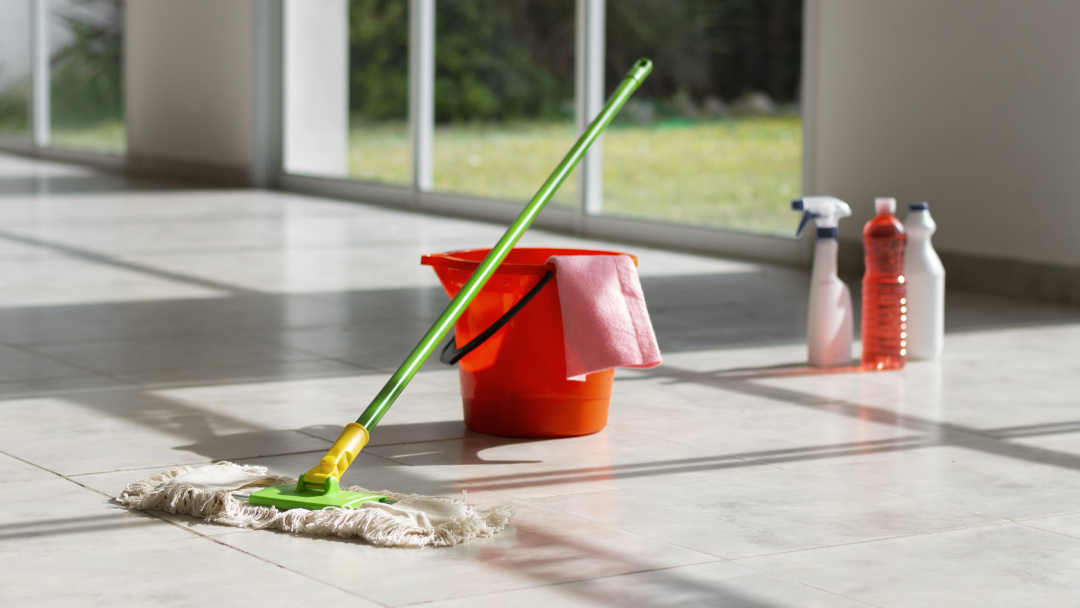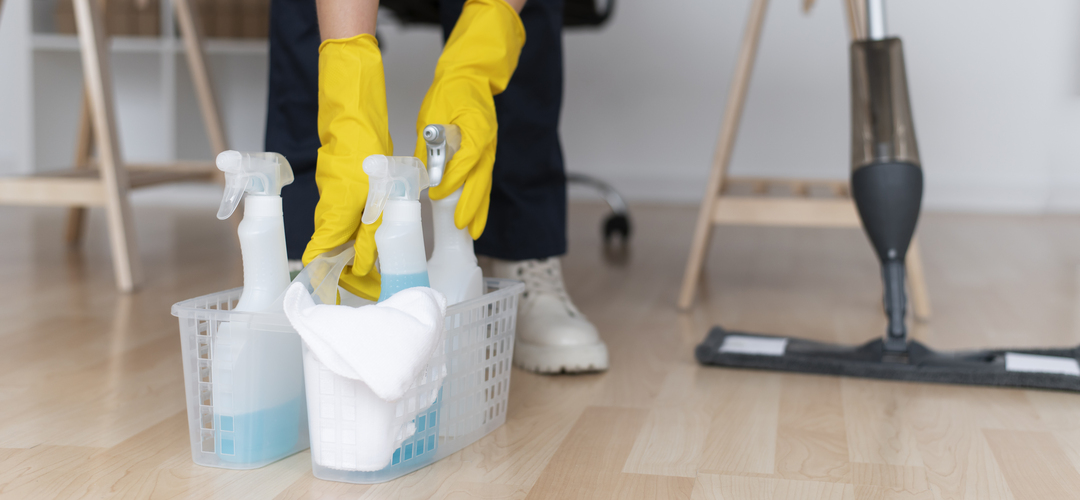
Easy Step-by-Step DIY Guide to Cleaning Your Floors
November 05, 2023DIY floor cleaning is crucial for maintaining a clean and healthy home environment. It not only enhances the aesthetic appeal of your home but also prolongs the lifespan of your floors.
Easy Step-by-Step DIY Guide to Cleaning Your Floors
Cleaning your floors can seem like a daunting task, but with the right tools and techniques, it can be a breeze. Whether you have hardwood floors, laminate floors, or floor tiles, this guide will provide you with step-by-step instructions on how to clean your floors effectively and efficiently.
Preparation
Before you start cleaning your floors, you’ll need to gather the necessary tools and materials. This includes a vacuum cleaner, dust mop, hot water, plastic sheeting, and elbow grease.
Vacuum Cleaner: A vacuum cleaner is essential for removing dust and debris from your floors. Make sure to vacuum the entire floor area, paying special attention to corners and hard-to-reach areas.
Dust Mop: A dust mop is great for picking up any remaining dust bunnies after vacuuming.
Hot Water: Hot water is effective for loosening dirt and grime on your floors.
Plastic Sheeting: Plastic sheeting is useful for protecting your furniture and other items from dust and water splashes during the cleaning process.
Elbow Grease: Last but not least, don’t forget to bring your elbow grease! Cleaning floors can be a physically demanding task, so be prepared to put in some effort.
Regular Cleaning
Regular cleaning is crucial for maintaining the appearance and longevity of your floors. Here are some cleaning methods for different types of floors:
Hardwood Floors: For hardwood floors, use a dust mop or vacuum cleaner to remove dust and debris. Avoid using water or steam cleaning as it can damage the wood. Instead, use a wood floor cleaner and a microfiber mop for a thorough cleaning.
Laminate Wood Floor: Laminate floors are more water-resistant than hardwood floors, but they still shouldn’t be soaked. Use a damp mop and a gentle floor cleaner. Avoid using steam cleaners or wet mops, which may cause the planks to swell, warp, or delaminate.
Floor Tiles: For floor tiles, use a mop and a mild detergent. For the grout joints, use a small brush and a grout cleaner to remove any dirt or stains.
Deep Cleaning
Deep cleaning involves a more thorough cleaning process and is usually done every few months or as needed. Here are some deep-cleaning methods for different types of floors:
Hardwood Floors: For a deeper cleaning of your hardwood floors, you can use a wood floor cleaner and a scrub brush. Make sure to follow the grain of the wood to avoid scratching the surface. Rinse with a damp mop and dry immediately.
Laminate Wood Floor: For laminate floors, you can use a laminate floor cleaner and a soft cloth or sponge. Avoid using abrasive cleaners or scrub brushes as they can scratch the surface. Rinse with a damp mop and dry immediately.
Floor Tiles: For floor tiles, you can use a tile cleaner and a scrub brush. For the grout joints, use a grout cleaner and a small brush. Rinse with a mop and dry immediately.

FLOOR MAINTENANCE
Maintaining your floors is just as important as cleaning them. Here are some tips on how to maintain different types of floors:
Hardwood Floors: To maintain your hardwood floors, consider applying a polyurethane finish for a smooth finish and added protection. You can also use wood filler to fill in any scratches or dents.
Laminate Wood Floor: For laminate floors, avoid using wax or polish. Instead, use a laminate floor cleaner for regular cleaning. For scratches or dents, use a laminate repair kit.
Floor Tiles: For floor tiles, seal the grout joints to prevent stains and make cleaning easier. Also, consider applying a tile sealer for added protection.
SAFETY PRECAUTIONS
When cleaning your floors, it’s important to take safety precautions to prevent accidents and injuries. This includes wearing safety gear such as gloves and safety glasses, and ensuring the area is well-ventilated if you’re using strong cleaning products.
HOW DO I REMOVE TOUGH STAINS FROM MY FLOOR TILES?
Removing tough stains from floor tiles can be a bit challenging, but with the right approach, it’s doable. Here are some methods you can try:
Hydrogen Peroxide: Hydrogen peroxide is particularly effective for cleaning coffee stains, nail polish, and blood stains on ceramic or finished tile. Dab the stain with 3 percent strength hydrogen peroxide. If your stain is particularly hard to remove, lay a rag soaked with hydrogen peroxide over the stain. Let it set for 1-2 hours. Then, remove the rag and proceed with scrubbing the stain.
Bleach: Dilute bleach in cold water for deep-set or organic stains. Pour a cap of bleach into a 1-gallon bucket of cold water and mix it. Then, use a white cloth to dab and scrub away the stain. Bleach is especially effective with ink, coffee, juice, and blood stains.
Scouring Powder: Wet the stain slightly with water, then sprinkle enough scouring powder onto the floor tile stain to completely cover it. Mix it gently with the water and let the paste sit for a few minutes to react. Then, wipe the stain with an abrasive sponge or a rag.
Vinegar Solution: Mix one cup of white vinegar and two cups of warm water, then put in a spray bottle. Shake well before use, then gently spray on stained areas and allow to air dry.
Remember to always test these methods on an inconspicuous spot first to ensure they won’t damage your tiles. Also, make sure to rinse the area thoroughly after using these solutions to prevent any residue from attracting more dirt.
WHAT ARE SOME BENEFITS OF DIY FLOOR CLEANING?
DIY floor cleaning has several benefits:
Cost-Effective: DIY floor cleaning can save you money as it eliminates the need for professional cleaning services. All you need are some basic cleaning supplies.
Flexible Timing: With DIY cleaning, you can choose to clean your floors at a time that suits you best, providing flexibility.
Customized Cleaning: You can adjust your cleaning methods based on the type and condition of your floors. This personalized approach can lead to better results.
Healthier Home: Regular cleaning can help to remove dust and allergens from your floors, contributing to a healthier living environment.
Longevity of Floors: Proper cleaning can extend the lifespan of your floors, protecting your investment.
FINAL WORDS
Cleaning your floors doesn’t have to be a chore. With the right tools and techniques, you can keep your floors looking their best. Remember, regular cleaning and maintenance can go a long way in preserving the beauty and longevity of your floors.
For more expert advice and high-quality flooring products, visit our website Easy Step Flooring. We offer a wide range of flooring options to suit your needs and preferences.





